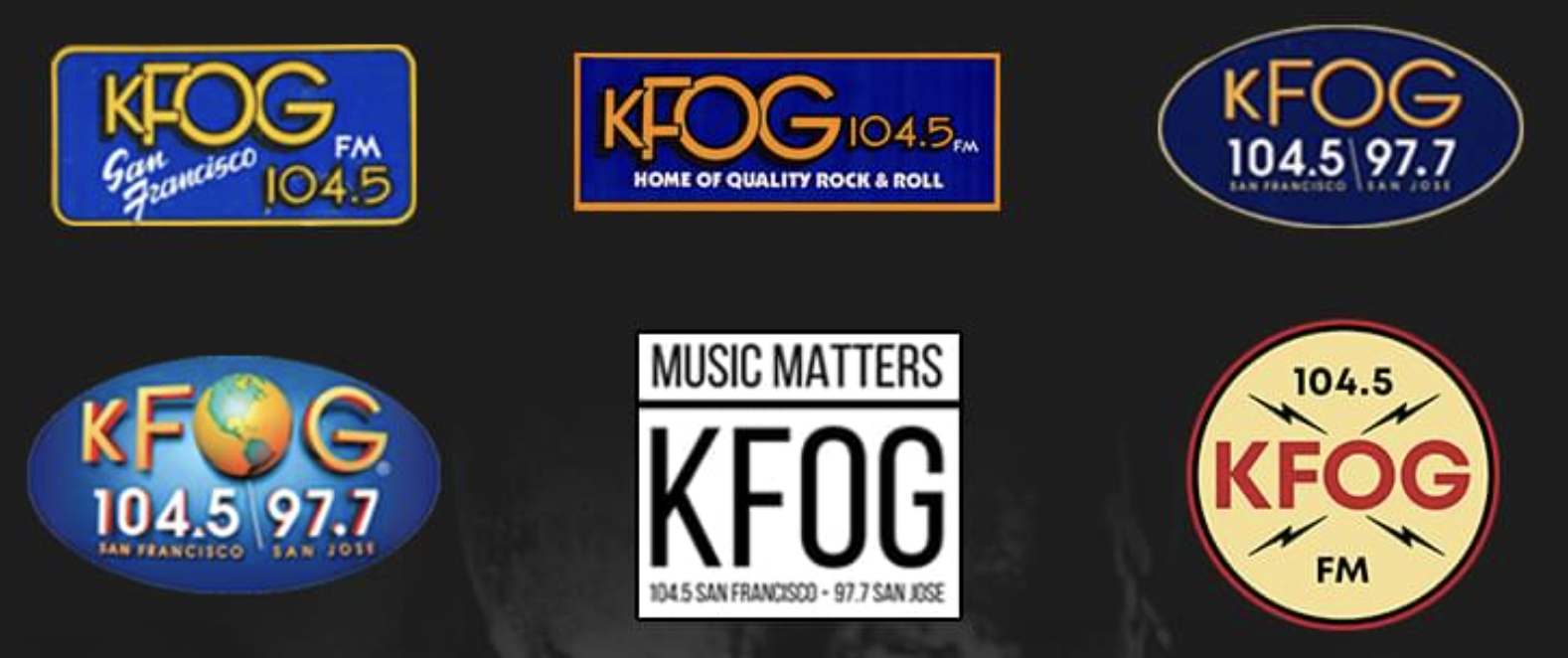When I moved to Palo Alto from North Carolina in 1985, the preëminent rock station for the Bay Area was KFOG, on 104.5 FM. The morning jock was M. Dung (the on-air handle of Michael Slavko), who did more than anyone else to make me feel comfortable and welcome in a completely new environment. Like the rest of the station, M (what he usually called himself) was “always on, but a little off.”
My fave rock station in North Carolina had been WRDU/106.1, to which many friends who had worked at WQDR/94.7 had just migrated after that much-loved station flipped to country music. (A genre I also like, but we’re talking about friends here.)
From 1982 to 2017, KFOG was a great friend to fans of rock and related genres. You can see how much it was loved just by searching for it. The top results are tribute sites KFOG.com and KFOGisForever. Below those are a list of heartfelt lamentations.
I’ll carry this forward with my answer to a Quora question: Will 104.5 FM in San Francisco ever flip back to any music format?
In American radio, very few station formats are permanent. Two of the most durable are all-news and all-sports. For decades, the biggest all-news and all-sports stations in major markets were only on AM signals. Nearly all of those stations in recent years have added FM signals, displacing whatever was on the FM channel they moved to. All-news WINS/1010 in New York, WBBM/780 in Chicago, and KNX/1070 in Los Angeles moved to 92.3, 105.9, and 97.1 respectively, replacing the music stations on those channels. All-sports WEEI/850 in Boston and WFAN/660 in New York did the same when they moved to 93.7 and 101.9 in those cities. And KNBR/680 did the same in San Francisco when it added the signal at 104.5, long the home of KFOG.
Never mind that KNBR’s day signal covers a third of California and its night signal covers the whole Western U.S., while KFOG’s old signal barely covers the Bay Area. AM is a dead band walking. FM is where the listening is, and the signal at 104.5 is at least competitive. By now there are very few incumbent ratings leaders on AM that have not added an FM signal. KFI/640 in Los Angeles, WLW/700 in Cincinnati, KOA/850 in Denver, and WSCR/670 in Chicago are four that come to mind. There are a handful of others. Even with those, I’m sure it’s a matter of time before their owners find an FM signal to add.
In the longer term, FM is doomed as well. The Internet is slowly eating away at every incumbent communications medium: print, radio, TV, all of it. Your best radio is now the phone in your pocket or purse. All stations of any importance are there as well as on old-fashioned broadcast bands. If you want to hear KFOG again, there are a number of websites streaming the old programs. Nearly every piece of recorded music ever played on KFOG is also on music services from Apple, Amazon, Spotify, and other sources.
Here is another reason why KFOG is unlikely to return to the airwaves: rock music is still with us, but its era is over. We could argue that, but look up Rock Era and see what comes up. KFOG played a lot of genres other than pure rock (one of the things that made the station distinctive), but it was still a rock station.
Music genres today are largely created and maintained online, rather than on the air.
But hey, maybe the old KFOG will return someday.
But, if it does, it will need to pry the callsign from its current holder: KFOG/1250 in Little Rock, Arkansas. Might be a long shot, but money talks. If there is an economic case, it’s one worth making. And, for what it’s worth, the station mostly identifies as “Power 92” (named for its FM signal), and I read in June that the AM side was off the air.
In respect to infrastructure (the theme of this blog), my point is this: As we move into the Digital Age, the Internet and digital tech will finish absorbing and obsolescing every old analog communication system.
Radio’s age lasted roughly from the early twenties of the twentieth century to the early twenties of the twenty-first. Some of what it was will live on through streams and podcasts online. But it’s a matter of time before radios will only play hiss.


0 responses so far ↓
There are no comments yet...Kick things off by filling out the form below.
Leave a Comment